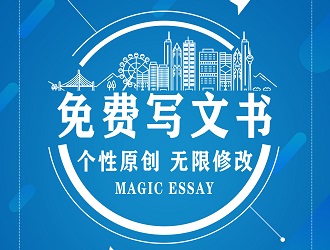留学文书范文|艺术设计类|工业设计|个人陈述|PS|1
嘉东/2020-01-21/ 分类:个人陈述PS/阅读:
Intended Program: Industrial Design I was an industrial designer before I knew that I was. Suppose you were required to remove the scales of a fish or the skin of a potato, what would you do? My solution was simplefind 10 lids of bear bott ...
Intended Program: Industrial Design
I was an industrial designer before I knew that I was. Suppose you were required to remove the scales of a fish or the skin of a potato, what would you do? My solution was simple—find 10 lids of bear bottles and nail them, inside out, in two rows onto a strip of wood. The zigzag structures would make this a handy tool, which was at once cost-efficient and environmentally friendly as it was recycled from waste industrial materials that would otherwise be buried in dump hills. Though this hand-made industrial product I invented when I was an elementary school student was not manufactured on a commercial basis, my parents and all the neighbors liked it for its practicality.
Yet, I was deeply aware of its inherent limitations. It was coarse and rough and did not look beautiful. I told myself that I must create a beautiful design. Then the opportunity came. Representing our school, I participated in a XX and, by exercising my talents in painting, I produced a very “artistic” design which brought me a winning prizing.
In retrospect, it was my family background that triggered my creative design impulses. Both of my parents are architectural designers and in their studios I could meet their colleagues and friends who were architects, structure engineers, interior designers and furniture designers. Under their influence, my early design works already manifested three essential elements of modern industrial design—functional pragmatism, aesthetic appeal, and environmental friendliness.
Now, on the verge of completing my undergraduate program in industrial design at the Department of XXX of XX University, I have gained a heightened understanding of industrial design as a scientific discipline. I have not only laid a solid academic foundation by excelling in all my specialized courses and achieving top scores in almost all of them; I have also improved my practical design skills through producing dozens of refined and sensitive works (please refer to my portfolio). As a junior student, I represented my university to participate in two international design competitions “XX” and “XX” Through effective teamwork, we succeeded in completing our competing pieces “XX” and “XX”
My undergraduate program is a journey of explorations and discoveries. While developing my scholastic aptitudes and practical skills, I have honed my aesthetic sensibility, perception of the world around us, and understanding of human needs. It is a process of unraveling my potentials and giving free play of my creative mind. My designs are characterized by bold originality, tempered by meticulous attention to even the minutest detail. In choosing industrial design, I have given full ventilation to my artistic impulses and concern for practical human demands.
Yet, a humiliating experience wrought an indelible memory on my mind, triggering my determination to pursue an advanced education in industrial design. At the end of the first semester, our department received a delegation of industrial designers from a German university. When touring XX, one of the delegates said to me: “I do not see many good design examples in this oriental metropolis. The gray buildings, with their uniform colors and contours, merge with the gray skyline indistinctively. The street lamps, bicycles, and cars, hardly any of them capture your attention.” I wanted to protest, but I had to admit that the first-rate designs are those of foreign products and the so-called good domestic designs are mostly copies of western design ideas. Under such circumstances, how to be truly creative becomes a question that has long obsessed me.
As far as I am concerned, the only way out of this dilemma confronting Chinese designers is to “think globally and act locally.” Against the backdrop of globalization, it is not that Chinese designers are not creative; the only problem is that they have failed to channel their creative impulses into international styles. To think globally is to develop international perspectives that may enable them to become leaders in a rapidly changing global culture. To act locally is to transmute their private and national experiences into tangible design expressions. The integration of the international thinking and local action will lead to design works at once aesthetically appealing and thematically eloquent. The individual experiences of Chinese designers are significant only to the extent that they are fused with international sensibilities.
Toward such an objective, it is necessary for me to go to the cultural melting pot that is the XX to experience how cultural pluralism has contributed to creative design and how the faculty and students of different cultural backgrounds communicate and interact with one another. I would like to explore the role that desiring, designing and producing play in the birth of a creative work. I would like to seek solution to two important questions—“How is it possible for me, as a native Chinese, to imbue the Chinese cultural elements and styles with new, modern, and global ones?” and “What’s the new role of designers with regard to the changing economic conditions of today and tomorrow?” I really want to become a designer who is an articulate original thinker, demonstrates leadership skills and seeks to use design as a vehicle for discovery and self-expression.
However, being a mere designer solely devoted to the solution of technical issues is not my total intention. I am equally interested in the idea of “total design program” in which the designer is not solely responsible for originating creative concepts but also for assuming the role of a manager who links up the otherwise discrete steps in the creation of a finished design product. The birth of a satisfying product is not simply determined by the pure design factors. It also depends on inter-departmental coordination, on technical support from engineering sciences and on marketing strategies. Otherwise, even the most original ideas would die in their infancy. In other words, a total design program is a perfect marriage of design objectives and business objectives. The designer is required to play a growing role in the management of a design program. Therefore, the idea of “design for design’s sake” is not sufficient. Designers need to be informed of the market feedbacks in order to deliver a total solution that addresses the clients’ needs on all fronts, including business details. In a word, the designer must have a clear awareness of the business context in which the design must thrive.
In this connection, I would like to seek answer to the question “How can I improve my skills to interact with other players in a particular design project and even serve as an agent for both the buyer/user and the seller/manufacturer?” I have attempted to hunt for an answer to this question by doing an internship this summer at a local company that designs advertisements for industrial products. It is so encouraging to find that the M.F.A. program offered by the School of Art & Design of the University of XX addresses this issue by treating the often overlooked “distribution” as a major component of a comprehensive, articulated process of creation. In order to ensure that creative work ultimately engages an audience in some context, your program teaches students to explore intentional distribution options, as well as issues of economic feasibility, information communication technology and social networking.
Through your program, I will be taught how to expand the intellectual reach of creative work and to utilize a comprehensive process for bringing creative work into the world. Apart from coursework, your program encourages students’ free exploration of creativity by involving them in summer collaborative projects, culminating activities including public exhibitions, creations in individual private studios, and group presentations of creative works. I believe that my prospective education in your graduate school will be an unparalleled opportunity for me to broaden my perspectives, improve my comprehensive skills, and prepare for an exciting career. But the most important outcome I expect from my embarking on your program is that, by capitalizing on my cross-cultural experiences, I will be well equipped to chart new directions in tomorrow’s creative work.
Yet, I was deeply aware of its inherent limitations. It was coarse and rough and did not look beautiful. I told myself that I must create a beautiful design. Then the opportunity came. Representing our school, I participated in a XX and, by exercising my talents in painting, I produced a very “artistic” design which brought me a winning prizing.
In retrospect, it was my family background that triggered my creative design impulses. Both of my parents are architectural designers and in their studios I could meet their colleagues and friends who were architects, structure engineers, interior designers and furniture designers. Under their influence, my early design works already manifested three essential elements of modern industrial design—functional pragmatism, aesthetic appeal, and environmental friendliness.
Now, on the verge of completing my undergraduate program in industrial design at the Department of XXX of XX University, I have gained a heightened understanding of industrial design as a scientific discipline. I have not only laid a solid academic foundation by excelling in all my specialized courses and achieving top scores in almost all of them; I have also improved my practical design skills through producing dozens of refined and sensitive works (please refer to my portfolio). As a junior student, I represented my university to participate in two international design competitions “XX” and “XX” Through effective teamwork, we succeeded in completing our competing pieces “XX” and “XX”
My undergraduate program is a journey of explorations and discoveries. While developing my scholastic aptitudes and practical skills, I have honed my aesthetic sensibility, perception of the world around us, and understanding of human needs. It is a process of unraveling my potentials and giving free play of my creative mind. My designs are characterized by bold originality, tempered by meticulous attention to even the minutest detail. In choosing industrial design, I have given full ventilation to my artistic impulses and concern for practical human demands.
Yet, a humiliating experience wrought an indelible memory on my mind, triggering my determination to pursue an advanced education in industrial design. At the end of the first semester, our department received a delegation of industrial designers from a German university. When touring XX, one of the delegates said to me: “I do not see many good design examples in this oriental metropolis. The gray buildings, with their uniform colors and contours, merge with the gray skyline indistinctively. The street lamps, bicycles, and cars, hardly any of them capture your attention.” I wanted to protest, but I had to admit that the first-rate designs are those of foreign products and the so-called good domestic designs are mostly copies of western design ideas. Under such circumstances, how to be truly creative becomes a question that has long obsessed me.
As far as I am concerned, the only way out of this dilemma confronting Chinese designers is to “think globally and act locally.” Against the backdrop of globalization, it is not that Chinese designers are not creative; the only problem is that they have failed to channel their creative impulses into international styles. To think globally is to develop international perspectives that may enable them to become leaders in a rapidly changing global culture. To act locally is to transmute their private and national experiences into tangible design expressions. The integration of the international thinking and local action will lead to design works at once aesthetically appealing and thematically eloquent. The individual experiences of Chinese designers are significant only to the extent that they are fused with international sensibilities.
Toward such an objective, it is necessary for me to go to the cultural melting pot that is the XX to experience how cultural pluralism has contributed to creative design and how the faculty and students of different cultural backgrounds communicate and interact with one another. I would like to explore the role that desiring, designing and producing play in the birth of a creative work. I would like to seek solution to two important questions—“How is it possible for me, as a native Chinese, to imbue the Chinese cultural elements and styles with new, modern, and global ones?” and “What’s the new role of designers with regard to the changing economic conditions of today and tomorrow?” I really want to become a designer who is an articulate original thinker, demonstrates leadership skills and seeks to use design as a vehicle for discovery and self-expression.
However, being a mere designer solely devoted to the solution of technical issues is not my total intention. I am equally interested in the idea of “total design program” in which the designer is not solely responsible for originating creative concepts but also for assuming the role of a manager who links up the otherwise discrete steps in the creation of a finished design product. The birth of a satisfying product is not simply determined by the pure design factors. It also depends on inter-departmental coordination, on technical support from engineering sciences and on marketing strategies. Otherwise, even the most original ideas would die in their infancy. In other words, a total design program is a perfect marriage of design objectives and business objectives. The designer is required to play a growing role in the management of a design program. Therefore, the idea of “design for design’s sake” is not sufficient. Designers need to be informed of the market feedbacks in order to deliver a total solution that addresses the clients’ needs on all fronts, including business details. In a word, the designer must have a clear awareness of the business context in which the design must thrive.
In this connection, I would like to seek answer to the question “How can I improve my skills to interact with other players in a particular design project and even serve as an agent for both the buyer/user and the seller/manufacturer?” I have attempted to hunt for an answer to this question by doing an internship this summer at a local company that designs advertisements for industrial products. It is so encouraging to find that the M.F.A. program offered by the School of Art & Design of the University of XX addresses this issue by treating the often overlooked “distribution” as a major component of a comprehensive, articulated process of creation. In order to ensure that creative work ultimately engages an audience in some context, your program teaches students to explore intentional distribution options, as well as issues of economic feasibility, information communication technology and social networking.
Through your program, I will be taught how to expand the intellectual reach of creative work and to utilize a comprehensive process for bringing creative work into the world. Apart from coursework, your program encourages students’ free exploration of creativity by involving them in summer collaborative projects, culminating activities including public exhibitions, creations in individual private studios, and group presentations of creative works. I believe that my prospective education in your graduate school will be an unparalleled opportunity for me to broaden my perspectives, improve my comprehensive skills, and prepare for an exciting career. But the most important outcome I expect from my embarking on your program is that, by capitalizing on my cross-cultural experiences, I will be well equipped to chart new directions in tomorrow’s creative work.
此文书内容来源于网络,若侵犯权益,请及时联系我们!
若需要更多的文书范文也请联系我们!
-
VIP咨询

免费申请/获取文书范文加上方微信
-
微信公众号

更多免费申请信息请关注上方公众号
版权声明 本文仅代表作者观点,不代表本站立场。
本文系作者授权本站发表,未经许可,不得转载。
本文系作者授权本站发表,未经许可,不得转载。
扩展阅读:





